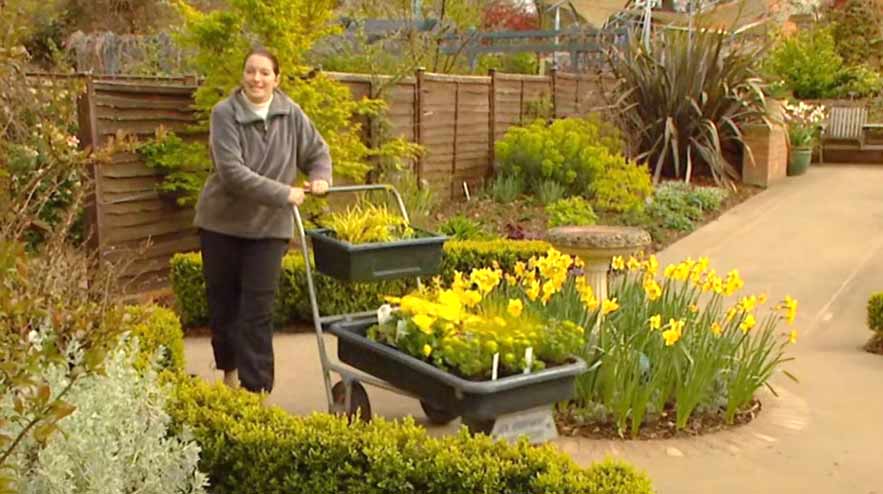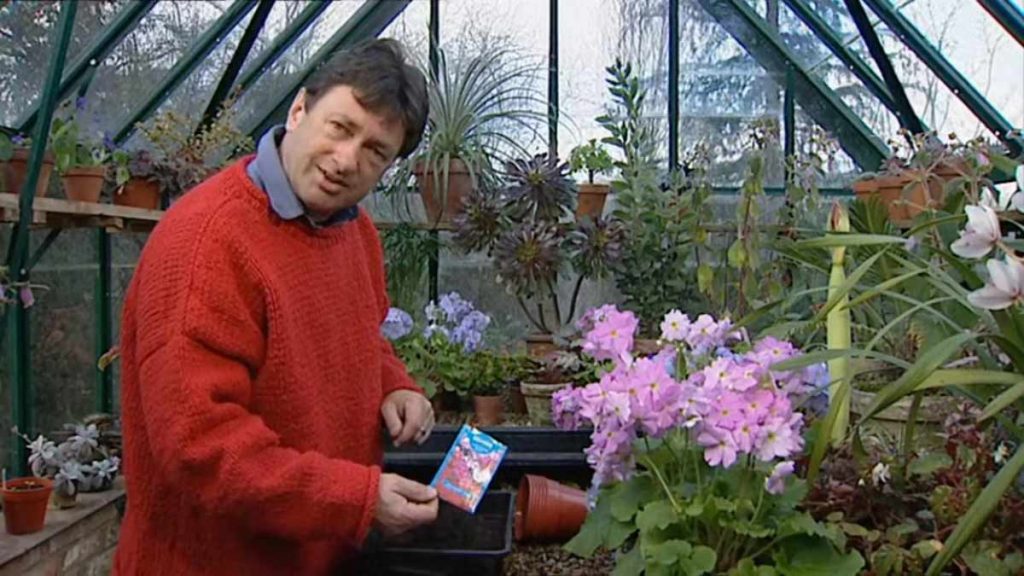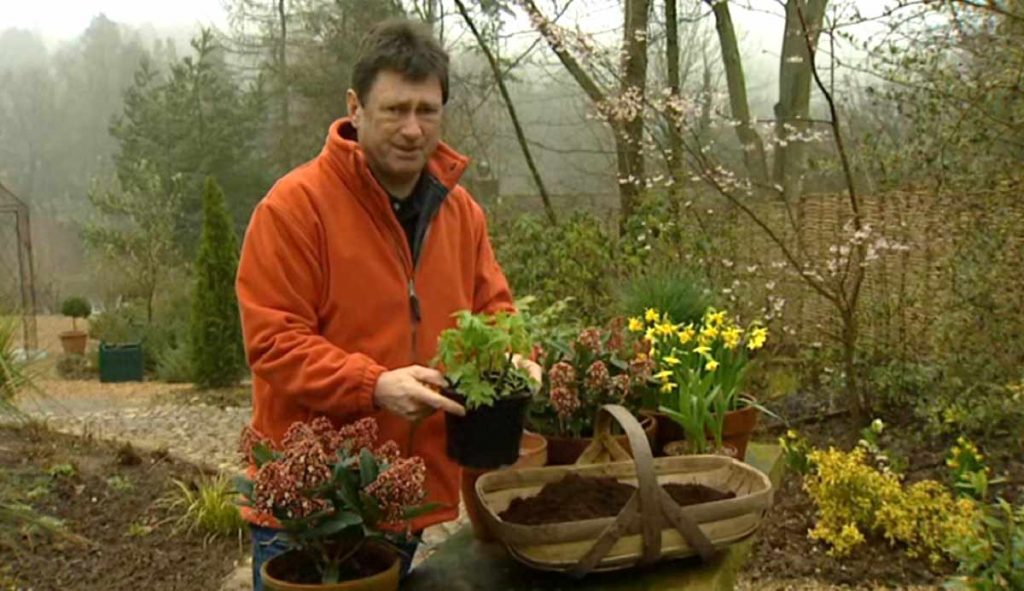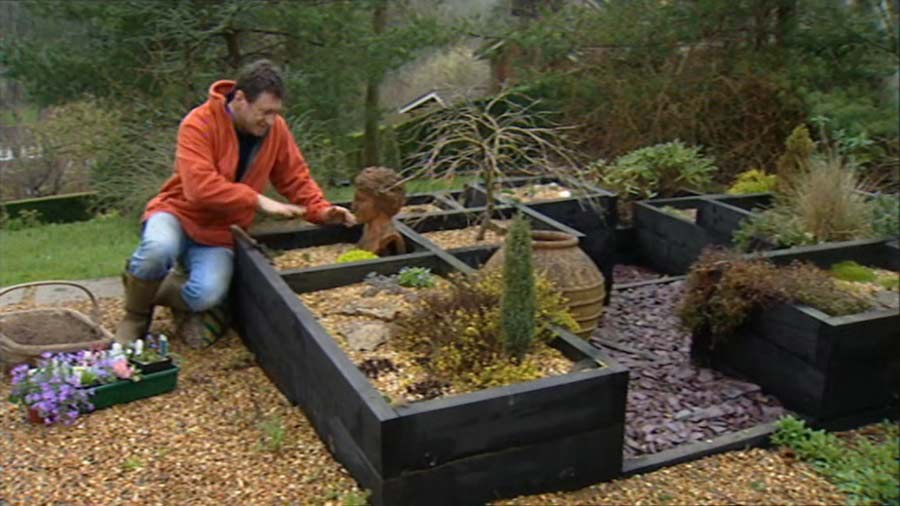Gardeners World episode 8 2002: Alan take’s care of spring jobs in the garden and Chris Bradshaw is in the heart of Oxford.
Gardening show packed with good ideas, tips, advice from experts and timely reminders to get the most out of your garden, whatever its size or type.
Gardeners World episode 8 2002
Snake’s head fritillary
Fritillaria meleagris is a Eurasian species of flowering plant in the lily family. Its common names include snake’s head fritillary, snake’s head (the original English name), chess flower, frog-cup, guinea-hen flower, guinea flower, leper lily (because its shape resembled the bell once carried by lepers), Lazarus bell, chequered lily, chequered daffodil, drooping tulip or, in northern Europe, simply fritillary.
The name Fritillaria comes from the Latin fritillus meaning dice-box, possibly referring to the chequered pattern on the flowers although this derivation has been disputed. The name meleagris means “spotted like a guineafowl”. The common name “snake’s head” probably refers to the somewhat snakelike appearance of the nodding flower heads on their long stems. Vita Sackville-West called it “a sinister little flower, in the mournful colour of decay”.
The flower has a chequered pattern in shades of purple, or is sometimes pure white.[8] It flowers from March to May and grows between 15–40 cm (6–16 in) in height. The plant has a button-shaped bulb, about 2 cm in diameter, containing poisonous alkaloids. It grows in grasslands in damp soils and river meadows at altitudes up to 800 m (2,625 ft).
Herbaceous border
A herbaceous border is a collection of perennial herbaceous plants (plants that live for more than two years and are soft-stemmed and non-woody) arranged closely together, usually to create a dramatic effect through colour, shape or large scale. The term herbaceous border is mostly in use in the United Kingdom and the Commonwealth. In North America, the term perennial border is normally used.
Macleaya
Macleaya, or plume poppy, is a genus of two or three species of flowering plants in the poppy family Papaveraceae, native to China and Japan. They are large rhizomatous herbaceous perennials with palmately lobed, frilly leaves of olive green or grey colour, 25 cm (10 in) long, and tall stems with airy plumes of petal-less, tubular, off-white or cream flowers.
Verbascum
They are biennial or perennial plants, rarely annuals or subshrubs, growing to 0.5 to 3 metres (1.6 to 9.8 ft) tall. The plants first form a dense rosette of leaves at ground level, subsequently sending up a tall flowering stem. Biennial plants form the rosette the first year and the stem the following season. The leaves are spirally arranged, often densely hairy, though glabrous (hairless) in some species. The flowers have five symmetrical petals; petal colours in different species include yellow (most common), orange, red-brown, purple, blue, or white. The fruit is a capsule containing numerous minute seeds.




